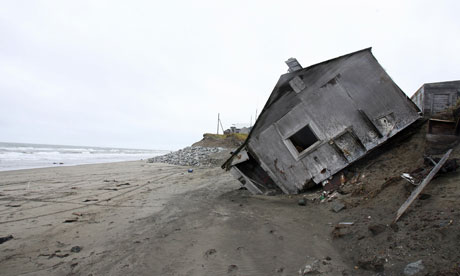Permafrost is soil that has remained below 0C (32F) for more than two years. It occurs in regions where the summer warmth fails to penetrate the ground sufficiently to thaw the soil. These conditions prevail in high-latitude or high-mountain areas that cover roughly a quarter of the Earth's land surface – including Alaska, Canada and Siberia. The thickness of permafrost ranges from a few metres to many hundreds of metres, depending on the local climate.
Due to climate change, soil temperatures are rising. This can be seen in long-term borehole measurements from different permafrost zones, which show a significant warming trend during the past 30 years. The permafrost layer is thinned by warming, and disappears entirely if the warming is sufficiently great and sustained.
In the near term, thawing permafrost can cause serious local problems – such as damaging or buildings and other infrastructure – but the larger concern around permafrost thaw relates to greenhouse gas emissions.
Permafrost soils are extremely rich in organic carbon. According to one estimate they contain about 1700 billion tonnes of it – about twice the total amount of carbon currently in the atmosphere. When the soil remains deep-frozen, the carbon is largely inert, but when the permafrost thaws, the decomposition of organic matter through microbial activity increases sharply – with the consequence that large amounts of carbon will eventually get respired into the atmosphere as CO2 and (to a lesser extent) methane.
This is an example of a positive feedback loop, because the greenhouse gases released by the thawing permafrost will exacerbate the warming, leading to more permafrost thawing, more warming, and so on. One recent study estimated that about one-tenth of the permafrost carbon pool might get released by 2100 under a scenario with strong future warming – equivalent to around twenty years of man-made CO2 emissions at current rates. More still would be released over subsequent centuries, and the process would not be readily reversible.

